How to Prioritize Your Necessities Today and Stay Healthy Tomorrow
AIDAS BENDORAITIS / MARCH 29, 2020
AIDAS BENDORAITIS / MARCH 29, 2020
Here’s the audio version — perfect if you’re on the go:
Invest 4 minutes leveling up on this topic:
Last weeks have been stressful for a lot of us. Just in days, we switched from skepticism, irony, and relaxation to uncertainty, awareness, and caution. We locked ourselves at homes and got anxious about real contacts with any people around. Coronavirus changed our lifestyles a lot. We started communicating online more. Some of us began to work remotely. At last, we learned how to wash our hands properly.
While staying home, we need to have some necessities by our side. What exactly should we purchase to be able to stay home safe and healthy two weeks or even longer? There are many aspects of how we could evaluate the importance of things that we need to get. Some of those follow:
When there are so many perspectives, how can we make the right decision on what to buy, so that we don’t end up only with the piles of toilet paper? We are going to use the strategic prioritizer 1st things 1st to evaluate a list of necessities by multiple criteria. There is even a project template for that.
Start a new project. From the project templates, choose “Necessities While in Quarantine”.
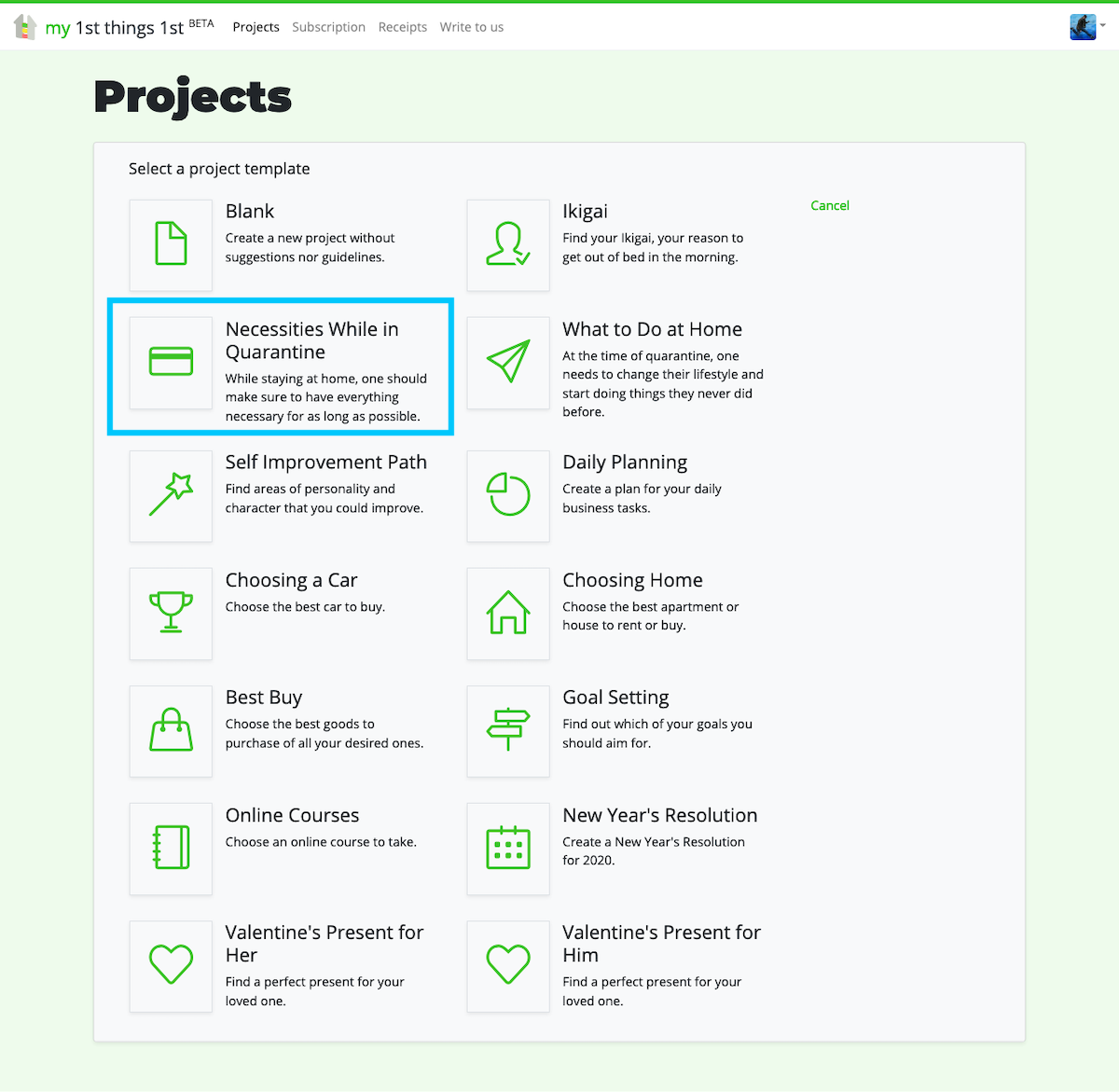
The project creation wizard will guide you through the most important questions:
1. Change or keep the project title and description:
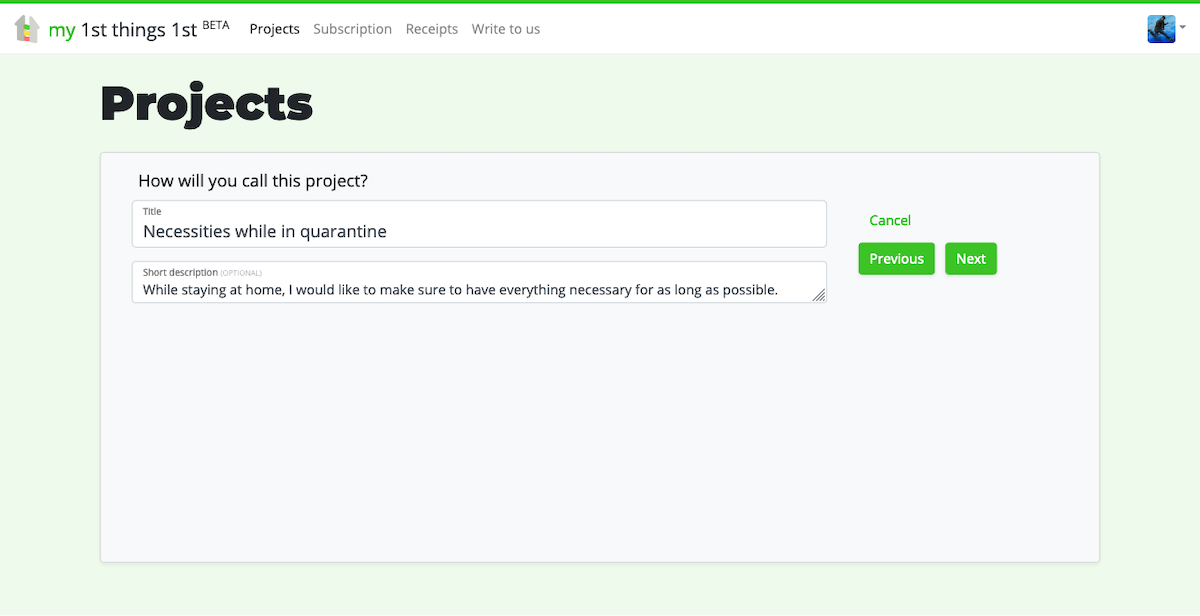
2. Decide how to name things. The preselected values suggest evaluating things by criteria. You can change that to evaluating necessities by aspects, or anything else.
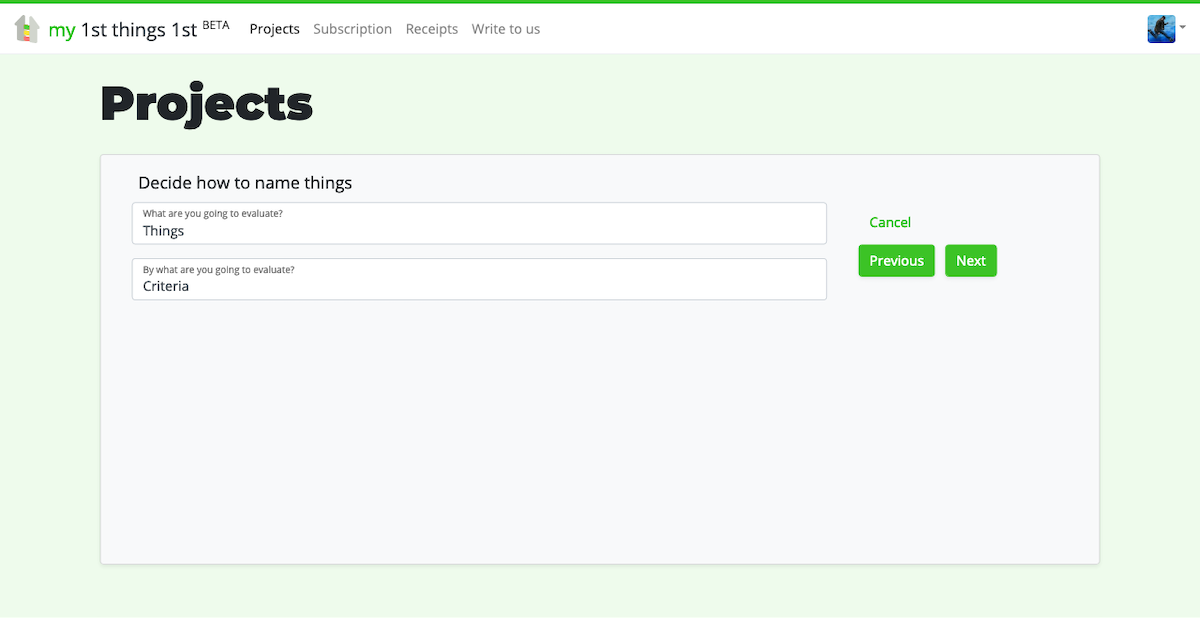
3. Choose some or all criteria from a suggested list. You’ll be able to enter some more criteria as free text later.
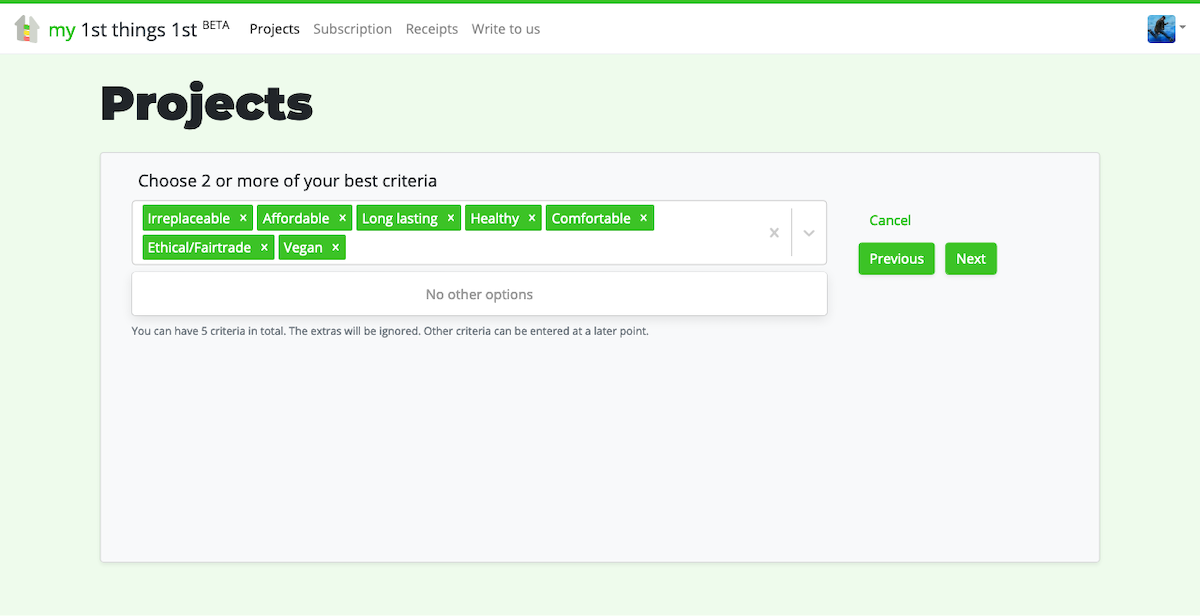
4. Choose some or all things from a suggested list. You’ll be able to enter some more necessities as free text later too.
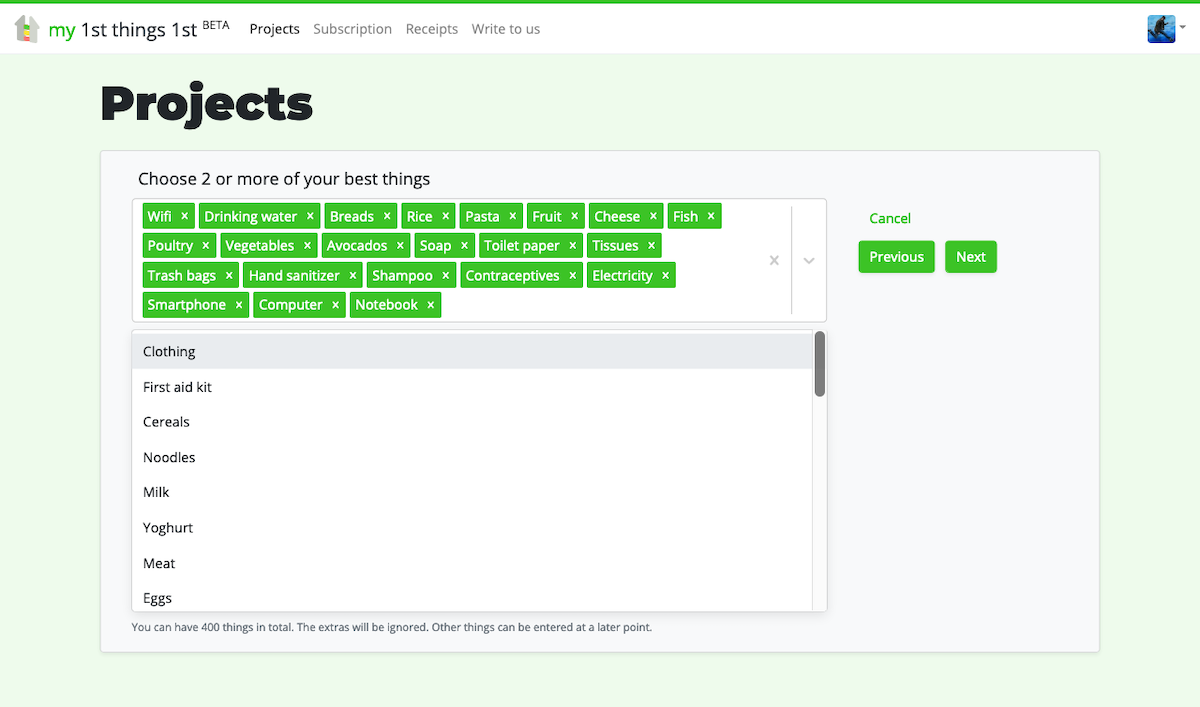
Now when you created the project, let’s explore the main steps of prioritization.
Now you can edit the list of criteria and change their importance or evaluation types. The default importance for all of them is 100%, and the evaluation type is choices from “definitely not” to “definitely” (you will see them in step 3).
For example, this is how I set the criteria and their importance:
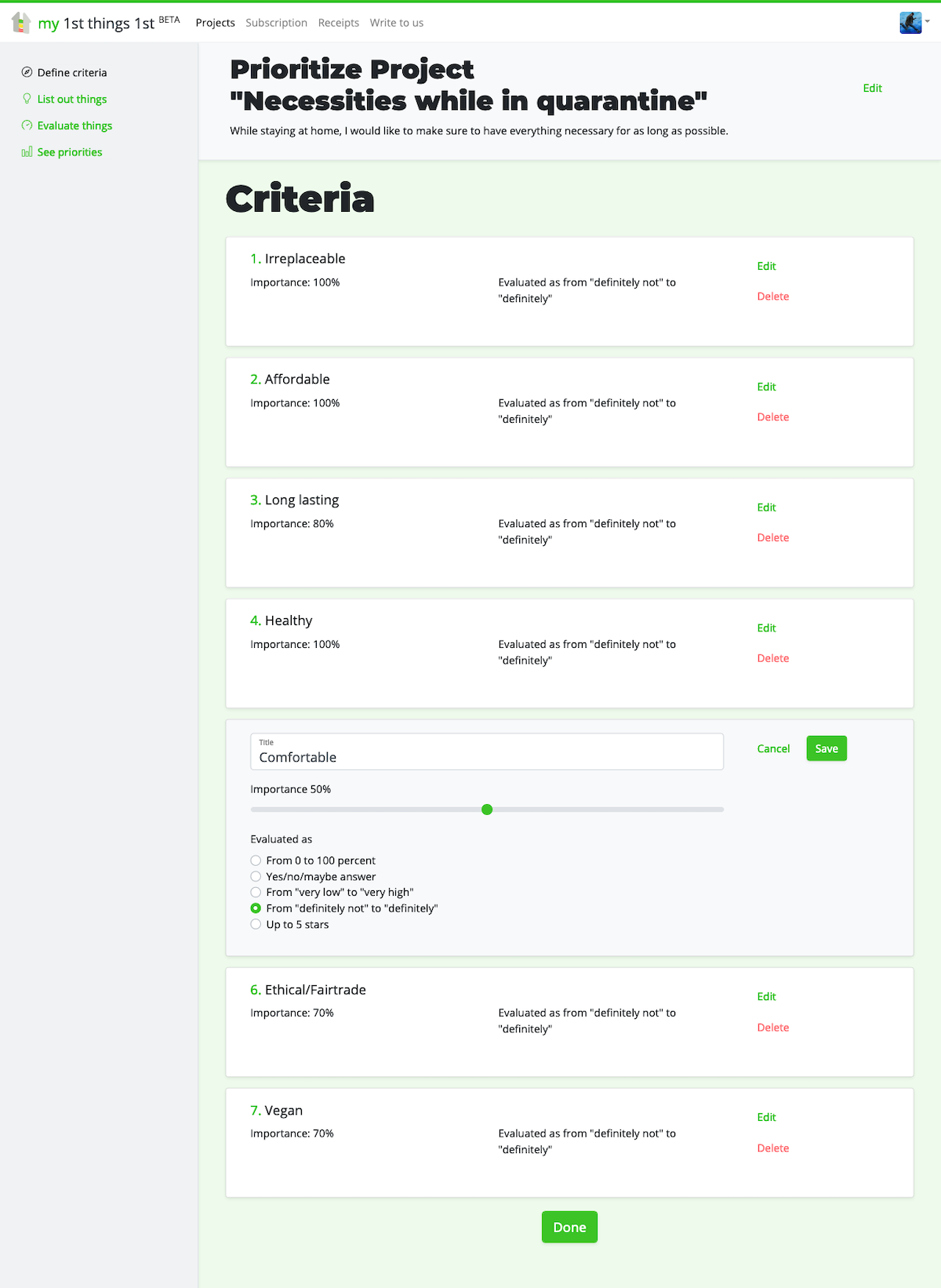
Your criteria and their importance will depend on your attitude and perspectives.
In the next step you will see the list of our chosen things where you can change their titles and descriptions.
For example, at the setup I chose these things:
And also, I need some toddler supplies for my little son and some caffeinated drinks to stay awake and productive every day. So I am bulk-adding these things to the list:
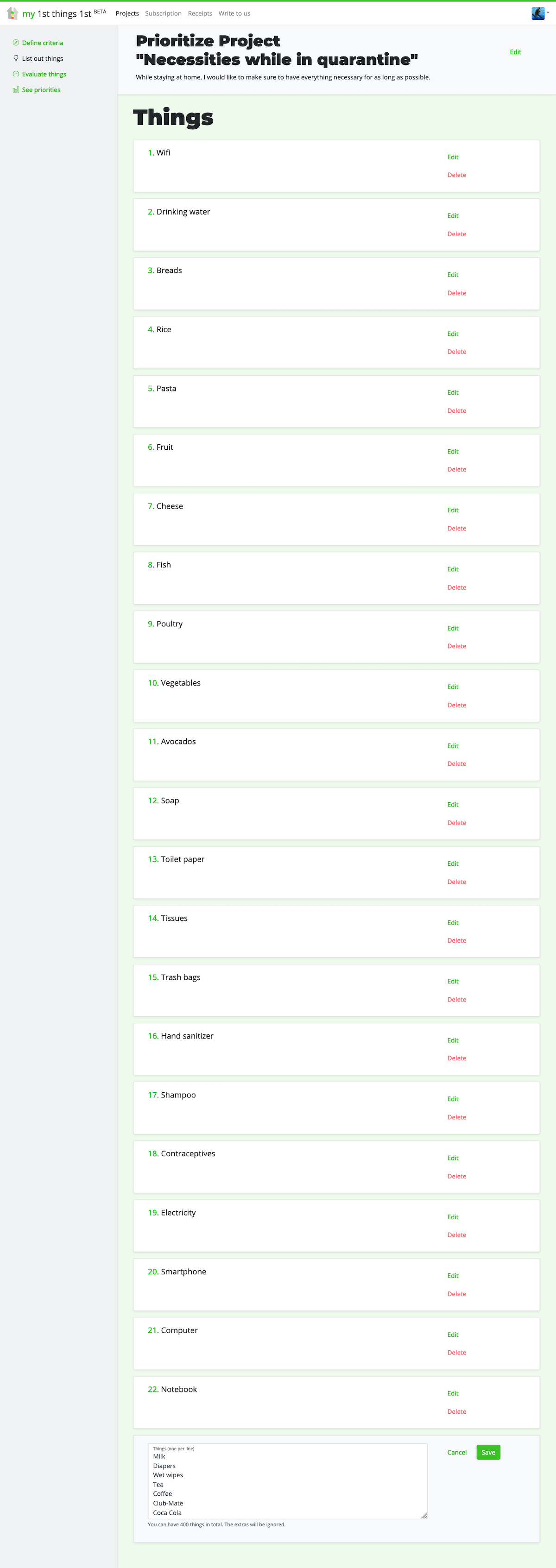
Now evaluate all things by all criteria. Go through the whole list and mark your choices. We see that fruit is probably not long-lasting, but definitely healthy. Rice is probably fairtrade, and cheese is definitely not vegan. Some things will be objective (like drinking water is definitely healthy), and some will be subjective (like cheese is probably affordable to you).
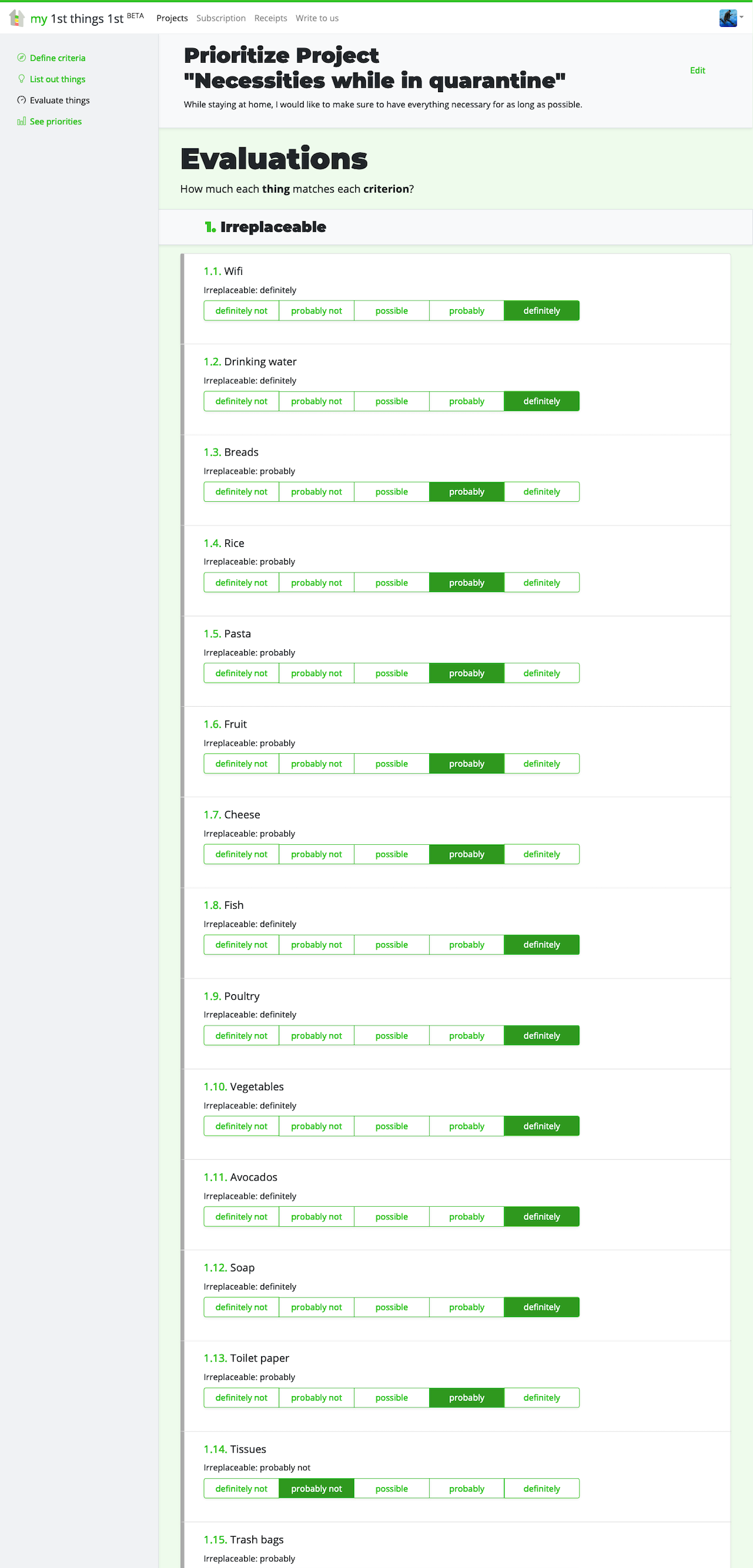
The prioritizer shows calculated and sorted things grouped into the ones:
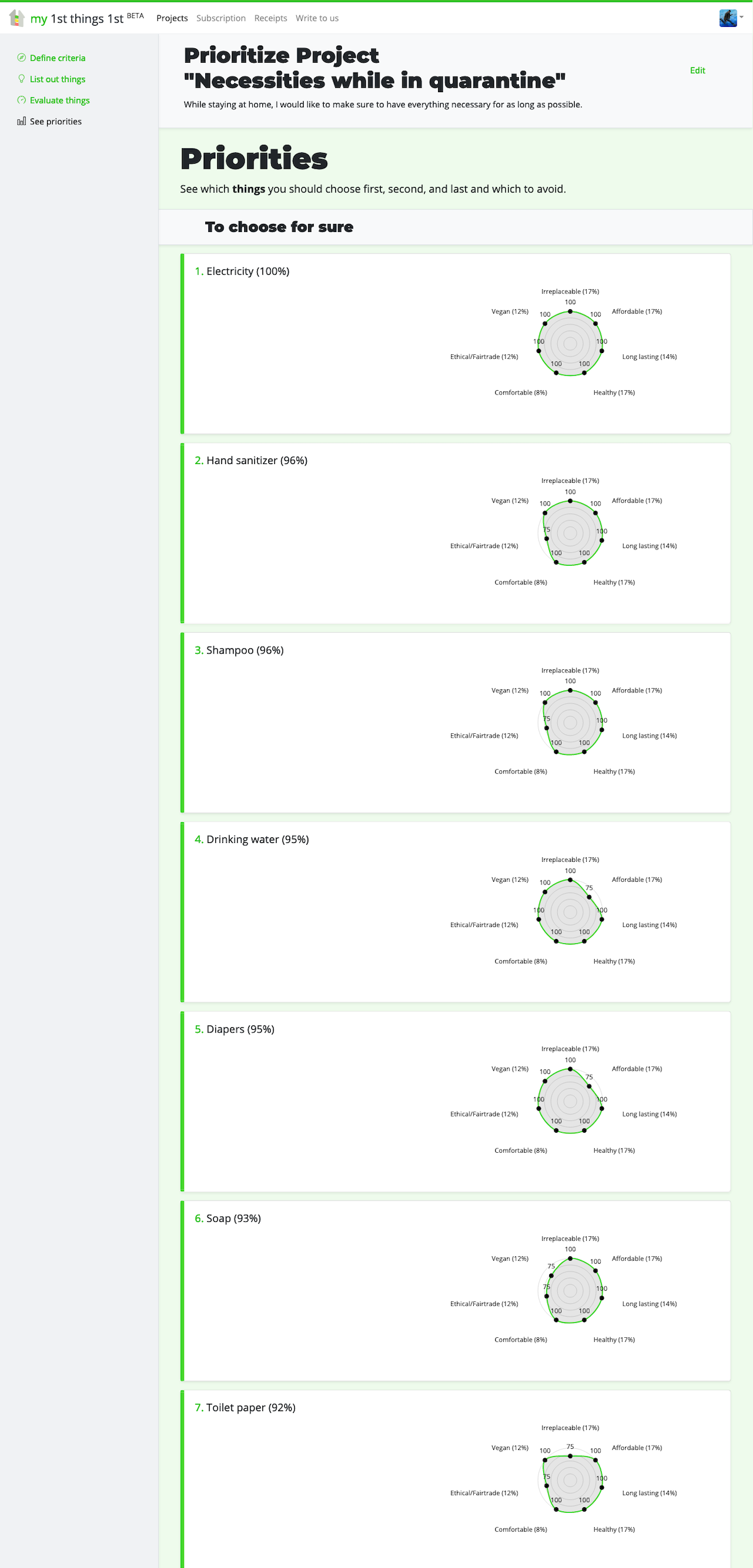
My most essential things are electricity and wifi (I should not forget to pay the bills), drinking water, and stuff from the drugstore like hand sanitizer, shampoo, diapers, soap, toilet paper, trash bags, etc. The most questionable thing is cheese (I could live without it).
After prioritizing your necessities, it’s time to print the PDF version of the results, grab a couple of tote bags, and go to the supermarket.
Check out the strategic prioritizer at my 1st things 1st.
Cover photo by Şahin Yeşilyaprak.